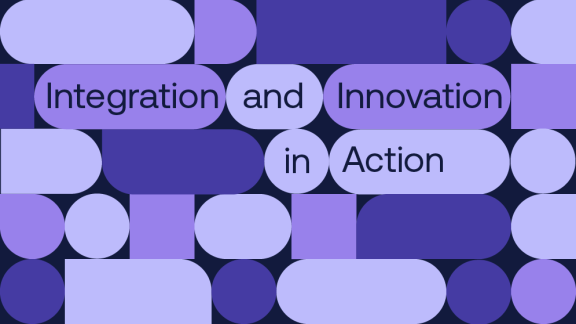Creating community hubs to support local populations

Key benefits and outcomes
- Around 50 charities have come together, with the integrated care system, to create central points of access through which populations can access a range of support.
- Interventions on offer are multi-faceted and address the social determinants of poor wellbeing.
- The voluntary sector is also supporting high-intensity users of emergency services to address the complex factors which contribute to crises.
What the system faced
Cornwall has a very active voluntary and community sector, with many organisations offering support to improve the health and wellbeing of local populations. This support often addresses issues that are reducing individuals’ wellbeing, but which sit beyond the immediate reach of health and care organisations.
Traditionally, organisations within the sector have tended to work quite separately – each bidding for discrete pots of money designated for specific issues, and so adopting a competitive rather than collaborative stance. This has sometimes prevented cohesive approaches to managing the health of populations. It has also made it difficult for health and social care professionals to keep track of which charities might be able to help address the specific needs of which citizens.
What the system did
Around 50 local charities, working in partnership with the local integrated care system, have come together with hundreds of grassroots groups to create community hubs throughout Cornwall. These serve as central points through which local populations can access the range of support provided by the voluntary, community and social enterprise sector. The idea is that organisations work together to identify what is available to people in a specific area, and which services can best meet the needs of which populations.
Support spans a large range of social determinants of wellbeing: there is access to the likes of leisure and physical wellbeing activities alongside legal advice, employability skills training, and access to healthcare services.
The hubs are located in a variety of spaces, with local communities and smaller local anchor institutions determining which spaces will make most sense to the population. In Falmouth, for instance, there is one at Age UK’s day centre and another in the form of the Dracaena Centre – this offers groups, events and services to those of all ages.
The ultimate aim of all the hubs is to reduce duplication, share resources, and provide a trusted and easy means of access to personalised conversations about support. In November 2022, the single point of access to all voluntary and community services was further bolstered by the launch of a dedicated phone line. Local residents can call the Community Gateway and explain their needs to a trained member of staff, who will help create a personalised package of input and support from a range of local charities.
Significantly, the line also serves as a single point of access for people seeking to arrange voluntary sector support on behalf of others. That includes GPs and other health and social care professionals. In this way, it is hoped the service will help prevent avoidable hospital admissions, reduce social isolation, and improve mental and physical wellbeing.
In addition, population health management techniques are increasingly being used to enable proactive identification of those who would benefit from voluntary sector support. The high-intensity user service – provided by a partnership of Volunteer Cornwall; mental health charities Pentreath and Mind Cornwall; and The CHOAS Group, which works with many people with long term conditions – focuses on those who frequently access support from emergency services. Service coordinators liaise with these individuals to understand the root causes of someone’s problems, and then work with voluntary sector and wider organisations to help institute action to address them.
It’s intended that this sort of focus on health inequalities and segmenting populations based on need will continue further. The ICS is split into three integrated care areas (ICAs), each made up of multiple primary care networks, and each has received £650,000 of funding from Public Health Cornwall to tackle health inequalities. In West Cornwall ICA, Volunteer Cornwall has been selected to hold these funds and coordinate the work. Leaders there anticipate it will be used to support further data analysis, helping to identify populations in need of support and to introduce appropriate interventions from partners across the system.
Results and benefits
The high-intensity users project has already had a practical impact. Recently, for instance, the service supported a patient for whom an ambulance was being called two or three times a week due to difficulties with a serious and rare form asthma. These health crises were often because of problems with medication – the patient was not taking her drugs at the prescribed times or with the prescribed frequency – and so a conversation with the GP suggested medication reminders might be helpful.
When the high-intensity coordinator spoke to the patient, however, it became very clear why it was so difficult for her to get into a regular routine with her medication. She was trying to care for her two young children who were struggling emotionally with seeing their mother so unwell, to support her husband whose mental health was also affected, and to be a carer to her older parents who live next door. Her own home, meanwhile, had a problem with damp.
The coordinator therefore arranged support for the wider family and is liaising with relevant agencies to try to address the housing issue. By taking this wider view of the factors contributing to wellbeing, this patient’s use of emergency services has fallen.
Overcoming obstacles
For voluntary and community sector organisations to move from competition to collaboration is a shift which can feel challenging. In addition, procurement exercises for large scale projects can make it difficult for coalitions of several small local charities to put in a joint bid. This sometimes means that larger organisations, without the granular knowledge of local populations held by smaller organisations, are favoured. Reviewing tender requirements to make it less time consuming and complicated for very local organisations to ‘club together’ on a bid could help here.
Takeaway tips
- It all comes back to relationships. If more collaborative approaches are to be fostered, there need to be opportunities for connections and understandings to be built.
- Find your catalysts. These are people who have a thorough understanding of specific local areas and populations – they know what is happening on the ground – while simultaneously having strong connections to the overall picture within an ICS. Bringing these individuals together will help accelerate population health management approaches and shared understandings between sectors and organisations.
Further information
For more information contact Ian Jones, chief executive of Volunteer Cornwall.



